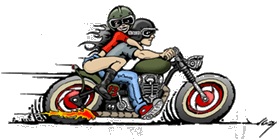
Golden brown waffles
A friend of mine had this to say about Waffle House. He said that he had read that Waffle House had decided to go up-market and was looking to create a better environment and better tasting food.
Waffle House for Christmas – And since it was Christmas and two Waffle Houses had recently opened and since it was the only thing open except gas stations, he decided to give one a try… his thoughts: “It’s much worse than I remember it.”
But that’s not the point. Just because the waffle in Waffle House tastes like carboard, the coffee is week and the syrup doesn’t have any body, that doesn’t mean that Waffle House doesn’t have its place. It’s just not right for Christmas.
The time for Waffle House is when you are on the road riding to Daytona Bikeweek for 10 hours on your Dyna, Chopper, Bagger Softail or Sportster. Then when you see the magnificent yellow and black sign of the Waffle House, it’s like seeing an oasis in the desert.

The time for Waffle House is when you are on the road
It might be raining or cold or hot but the thing about Waffle House, it’s always open. The food is always consistent… two notches down from the international standard of mediocrity, Denny’s.
But after 10 hours in the saddle you don’t care. Everything from Waffle House tastes and smells delicious.
Waffle House has other uses besides food
In a time of natural disaster, the federal government uses a simple gauge to determine the toll Mother Nature has taken on a local area.
It’s called the Waffle House Index, or test, which uses the operating conditions of the resilient Southern restaurants as a barometer for how well an area will recover from a hurricane, tornado or other hazard.
The index has three levels, based on the extent of operations and service at the restaurant following a storm:
- GREEN: full menu – restaurant has power and damage is limited.
- YELLOW: limited menu – no power or only power from a generator, or food supplies may be low.
- RED: the restaurant is closed – indicating severe damage

Waffle House for Christmas










